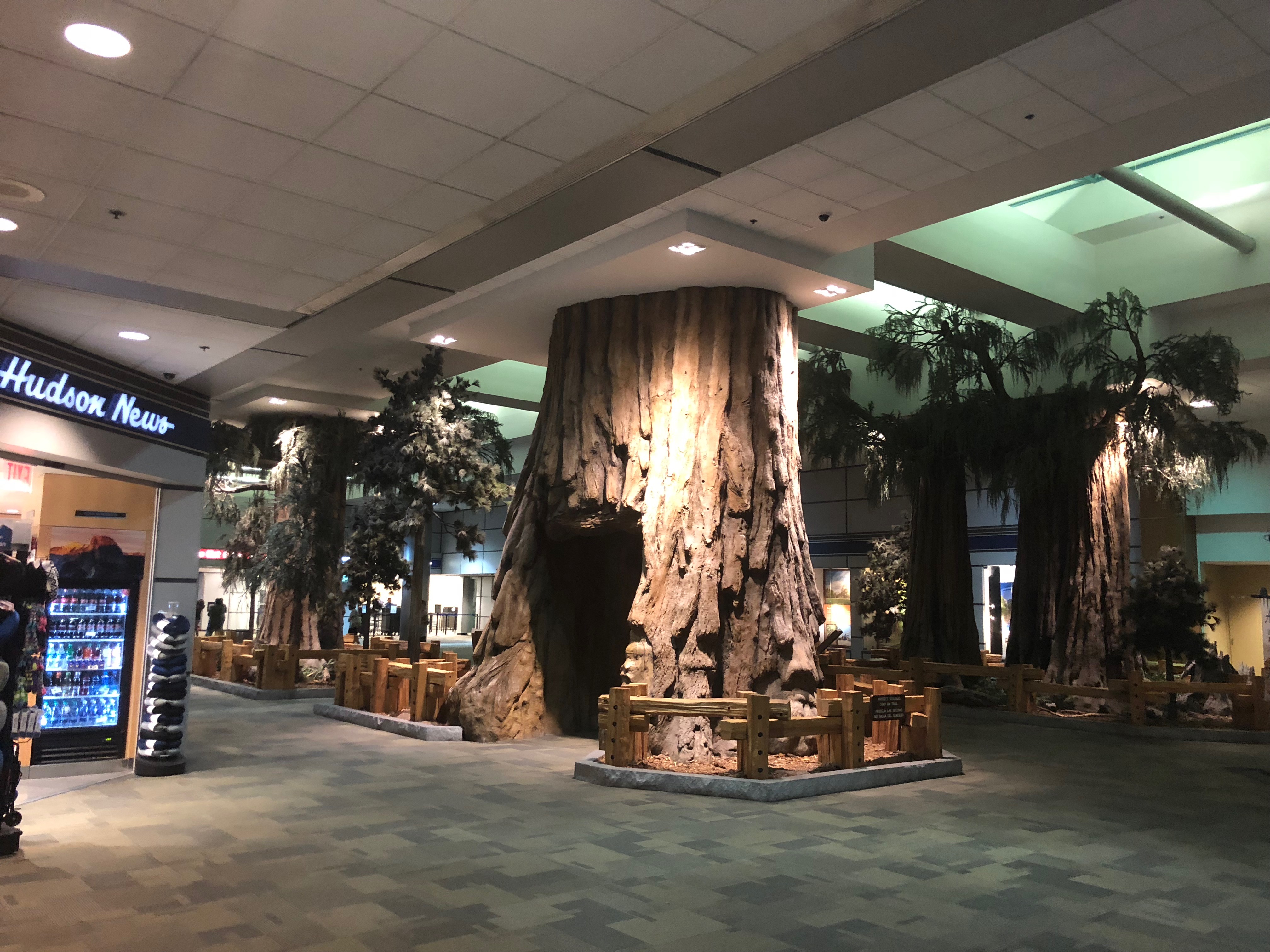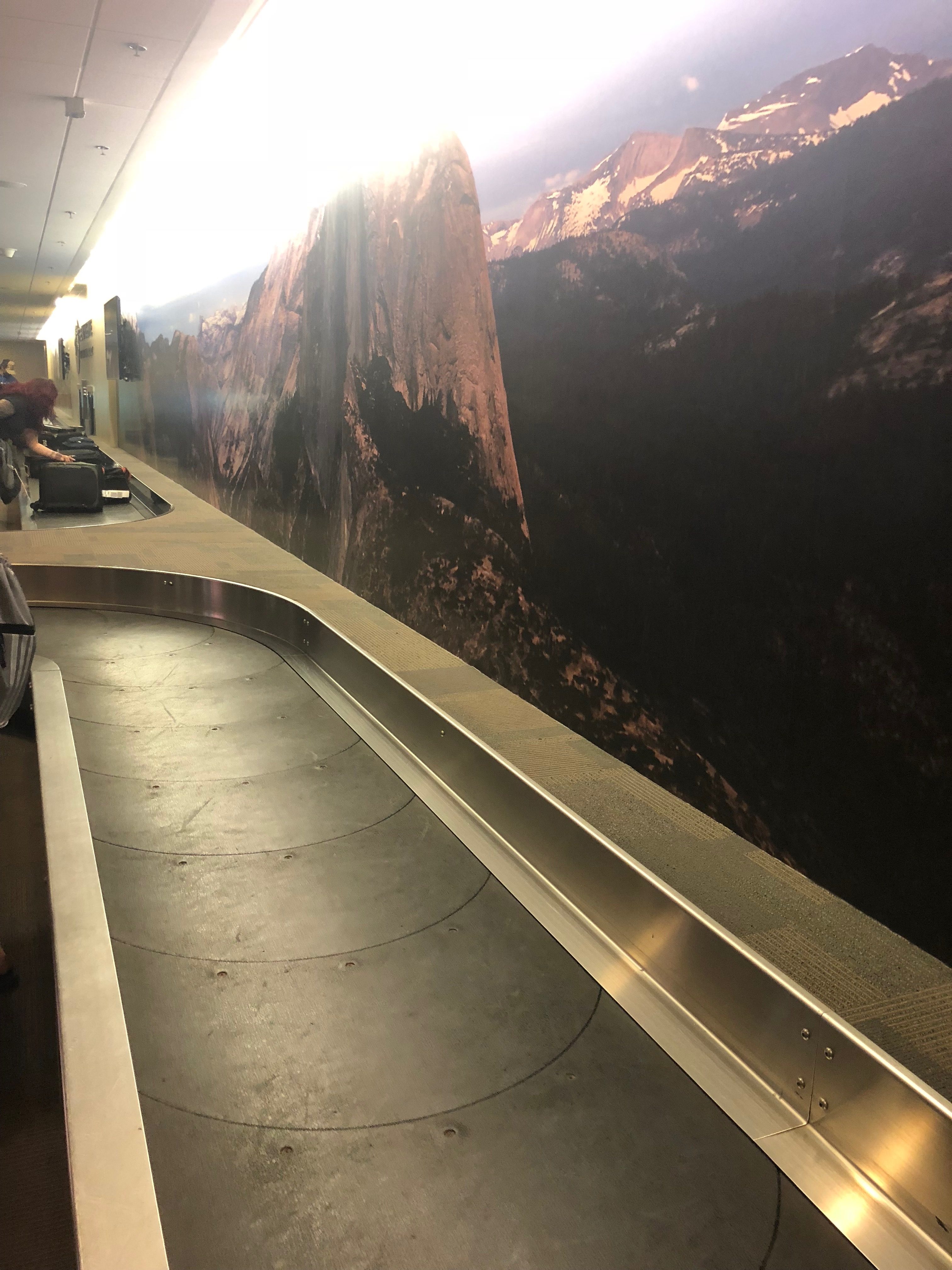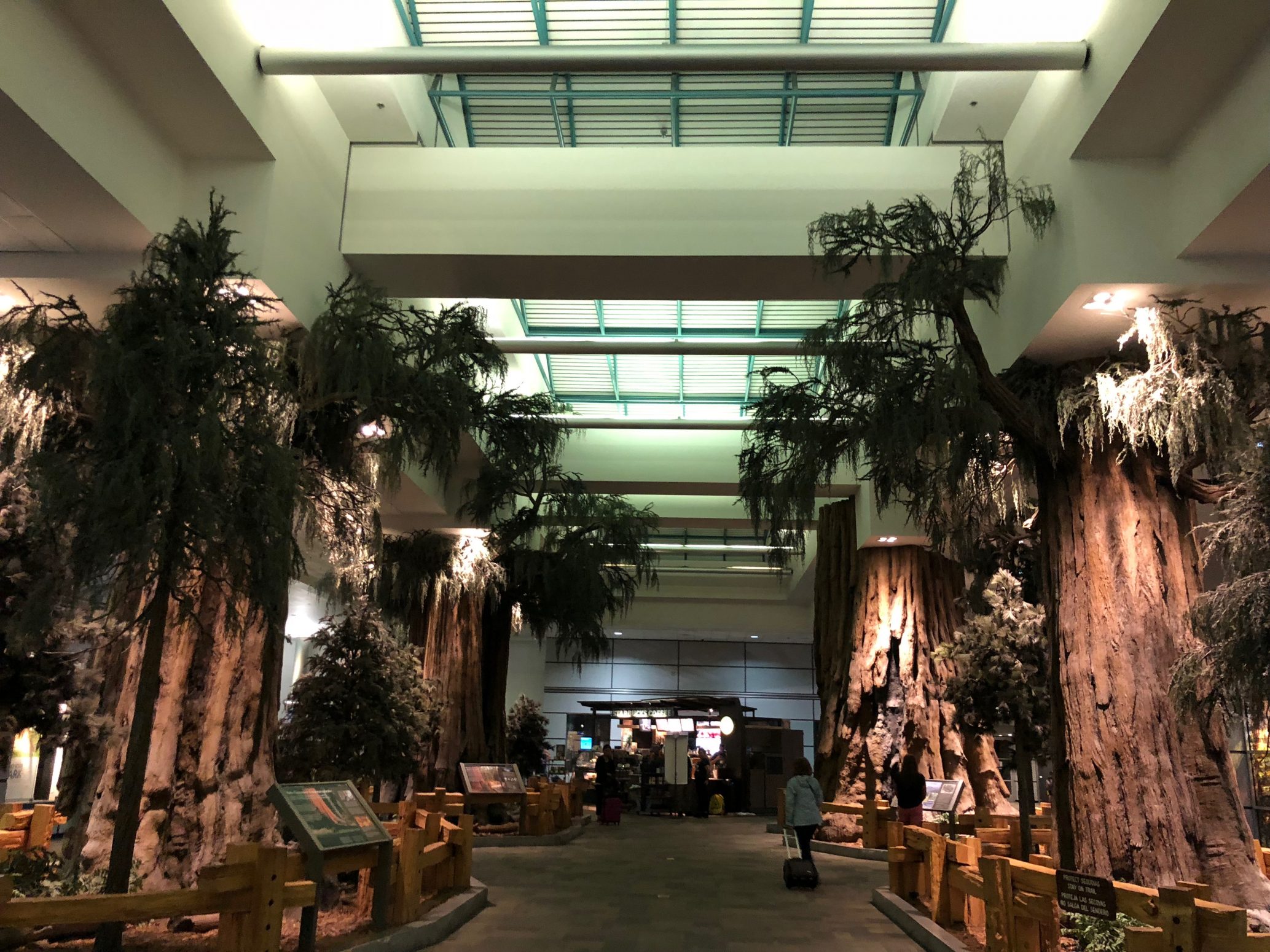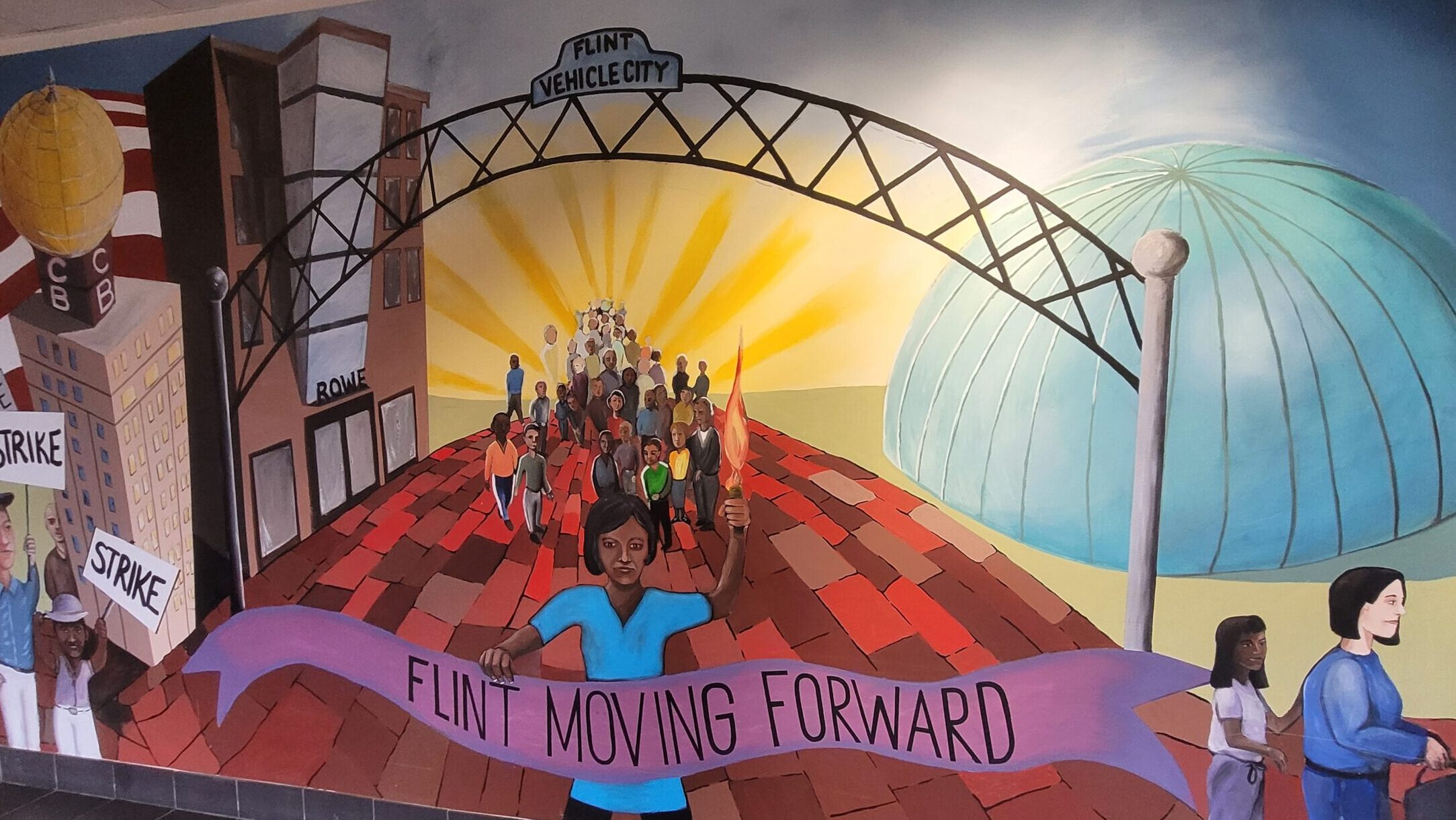Giant Sequoias live for thousands of years. In groves along California’s Sierra Nevada Mountains, where they’ve witnessed earthquakes and global warming; they watched California’s irrigation system get built, urban sprawl, highways, smog, and the War on Drugs; they saw the Gold Rush, the rise of the Spanish Missions, and before that, they watched thousands of years of Native history, now mostly lost to the written word.
They have also seen my own small lifetime. And in the San Joaquin Valley’s Fresno airport, a life-sized plastic diorama of Giant Sequoia trees watches as you pass through ticketing and enter security or wait for arrivals.

The Fresno airport began housing these man-made Sequoias in the late-aughts. The same company that installed them also installed Queen Palm Trees at San Diego Airport in 2013 and Birch trees at Orlando Airport in 2016. In Fresno, however, the trees were an effort to market the newly modernized airport to tourists, as it expanded from Fresno Air Terminal (FAT) to the newer and grander Fresno Yosemite International (FYI.)
When I was a child, my bags would be labeled FAT when I passed through Fresno Air Terminal. I understood it as an insult, a reference to the overly-heavy bags my immigrant parents packed to the brim. When we traveled to India to visit my grandparents, we packed boxes and boxes of fruit roll-ups or cracker-and-cheese snack packs–a bit of processed home to take with us as we returned to our roots–along with dozens of boxes of locally-grown raisins, a sweet delicacy known as “soggy” in our motherland of Punjab. The San Joaquin Valley, with its months of intense dry heat and silted soil, is the raisin capital of the world; I grew up with crop dusters gliding past my backyard playground, delivering pesticides to the grape fields next door.
In my memory, FAT had a psychedelic vibe to it; the hall leading to the departure gates was covered in floor-to-ceiling multicolored carpet. Was it a symbol of the multiculturalism of the day? Everything groovy, red and orange stripes of varying thickness. Like most things in this area, the carpet was kept past its time, a warehouse of yesterday’s fauna.
Today, children run through the passageways carved into the false giant trees, hide-and-seeking among the hellos and goodbyes. The airport is still small enough that the airline agents who check you in are often the same ones who will scan your ticket as you board your plane. But today, my luggage tags are labeled FYI.
For your information, Fresno has been aggressively re-marketing itself. Only after I was an adult did I learn that Fresno has never had a positive reputation in California, that it’s perceived as boring, rough, and backwards by comparison to Silicon Valley or Hollywood; the San Joaquin Valley doesn’t produce exciting commercial products that showcase California to the world, it produces food, necessary but unremarkable. Local politicians run on campaigns of agricultural water-rights and more generic issues like tax rates; what the larger population aspires for the region is not obvious. Perhaps the area doesn’t know what it dreams of being, and perhaps this is why its airport borrows iconography from the nearby National Parks.
For your information, the Giant Sequoias are not really representative of San Joaquin Valley daily life; the small town north of Fresno where I grew up was rural for most of my life until a recent housing boom, its claim to fame as a major pistachio and pomegranate-growing center. For your information, Fresno is not often considered a dream city. The main road outside the airport is lined with irrigation canals of stagnating water; the area is surrounded by warehouses, then track homes and strip malls, then highway, then fields. Fresno has some of the most alarming rates of extreme poverty in this country, and there are encampments within a few miles of the airport.
Such conditions demand a poetry, demand the trees as a borrowed beauty and a claim on something ethereal. Despite growing up among fields, every summer I went up into the hills for summer camp and slept under the Giant Sequoias. We hiked along the Shadow of the Giants, now burned in last year’s wildfires. I learned how the moss growing along the trees will tell you where your north is, if you are in the northern hemisphere; among the Giant Sequoias, I learned to orient, when lost from traveling.
For your information, the Fresno airport houses a solar farm, the largest of any airport in the U.S., in an effort to lessen the airport’s environmental impact; the Fresno area has some of the worst air quality in the country. Most of the year is spent in the type of blazing dry heat that turns everything not watered into faded dust, but the San Joaquin Valley has a dense fog, tule fog, that sometimes rolls in and cancels all departures and arrivals.
Places which are neglected become stale, places to travel through on your way to somewhere more important. By car, visitors take in the San Joaquin Valley as a series of exits along the Highway 99; the small towns aren’t relevant, just passing blurs, soon left behind. From the air, though, the land becomes a blanket of fruit and nut fields: once the plane leaves the compact world of the airport behind, life emerges within the vibrant green and dried yellow kaleidoscope, a natural carpet only visible from an airplane. It is a view beyond even what is visible from the tallest reaches of giant trees.
As a child, the Fresno writer William Saroyan would throw raisins down from the second story of his Armenian church just a few miles from this airport. He probably felt as tall as a tree, as high as a plane. When the Fresno poet Soul Vang was asked what makes Fresno the land of poets—from Poet Laureates Philip Levine and Juan Felipe Herrera, to Larry Levine and Gary Soto—Vang responded “dust.” With every generation, a new influx of people migrate into the area and rework the land; he was alluding to the succession of agricultural communities that have arrived since the “Okies” during the Dust Bowl Era, the generations of Mexican field workers and immigrants, the Japanese farmers who were interned, the Armenian farmers fleeing genocide, the more recent Hmong refugee farmers, and the Punjabi immigrant farmers who each bring their own farming innovations to the valley.
Today, when I fly between Fresno and Minneapolis, the carefully-tied cardboard boxes catch my eye, heavy loads often accompanying Hmong families traveling between these cities. Are they, too, carrying boxes of raisins for family elsewhere? In the one international lane of the Fresno airport, you see Mexican families lining up to travel to see their extended families or return back after their visit to this valley. There are Punjabi Sikh taxi drivers in faded, working-class turbans, waiting for passengers outside the airport; today, there is a small curbside space for ride-sharing cars, too.
An airport will remind you that you are always from somewhere else, always on your way to somewhere else, and that travel is a way of rooting oneself to the earth in new ways. I was once returning home to the Valley in spring, just before the annual World AG Expo was to be held in Tulare, an hour north of Fresno. My flight was filled with farmers from across the country, and so the plane chatter was filled with discussions of everything from managing the shift of organic farming to how to maintain the aquifer. While strange elsewhere, in the plane to this heartland these conversations all sounded in character.
“I was looking at the ceiling,” the poet June Jordan once wrote, “and then I saw the sky.”
Inside the airport, the furthest I can see is the ceiling; from the top of the Giant Sequoia, plastic or real, maps still hold sway, as they do on passports and visas. But from the sky, in the company of birds and lost balloons, the crust of earth is one continuing landmass, rooted below its artifice by a mantle and a core.






